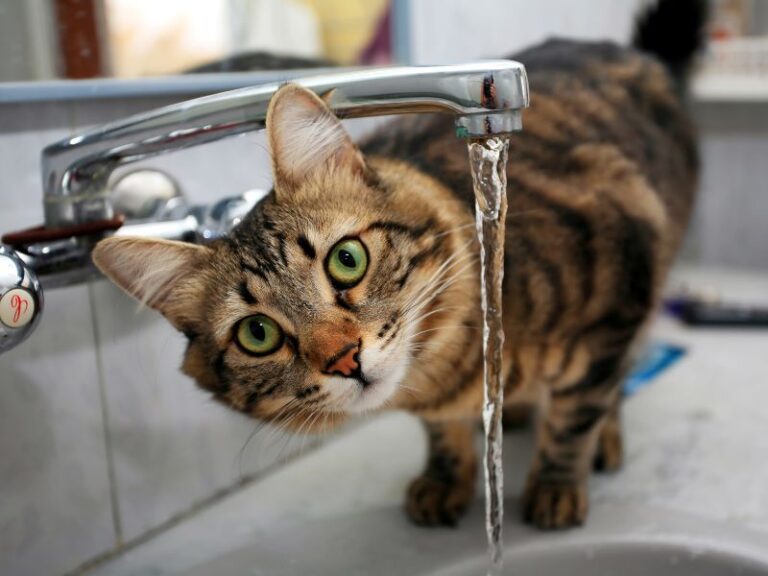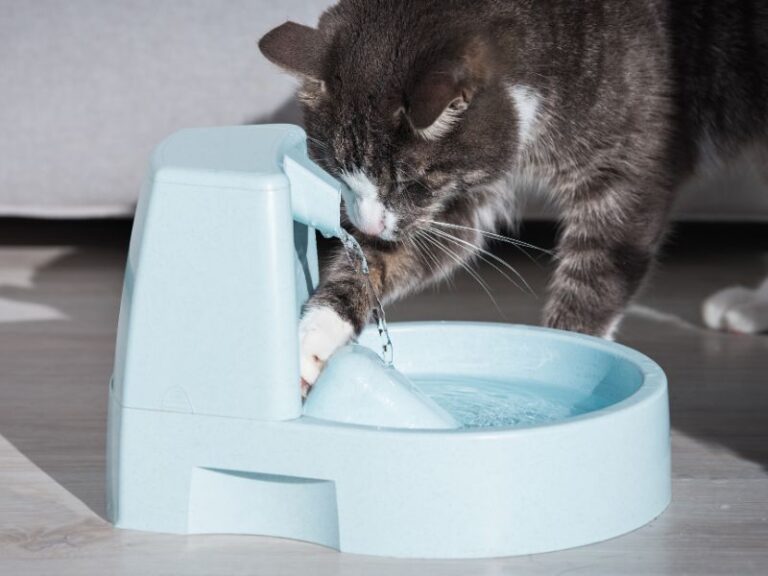Table of Contents
ToggleCat owners often find themselves captivated by their feline companions’ quirky behaviors and endearing charm. From their playful antics to their soothing purrs, cats truly have a way of stealing our hearts. However, amidst all the cuddles and companionship, it’s easy to overlook certain aspects of feline care that are crucial for their well-being. One such aspect is cat paw hygiene – a topic that holds more significance than meets the eye.
The Importance of Paw Hygiene for Cats
If you’ve ever watched a cat meticulously grooming itself, you’re well aware of the impeccable self-care routine these creatures possess. From cleaning their fur to maintaining their delicate whiskers, cats are true experts at staying spick and span. Yet, a crucial area that often goes unnoticed is their paws.
A cat’s paws serve as their interface with the world, enabling them to explore their surroundings, communicate through touch, and even engage in playful swats. However, these paws also come into direct contact with various surfaces, both indoors and outdoors, which can lead to the accumulation of dirt, dust, and debris. This is where the concept of paw hygiene steps in – an integral part of overall feline health that goes beyond just aesthetics.
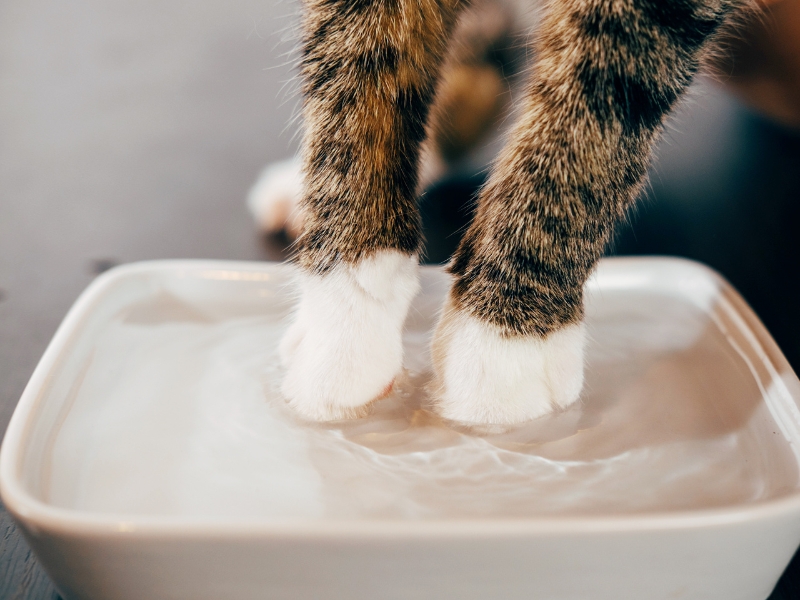
Understanding the Significance of Clean Cat Paws
Cats are known for their graceful movements, enigmatic personalities, and innate ability to keep themselves impeccably clean. However, within their self-grooming routine, one area often remains overlooked – their paws. Those adorable paw pads that play a crucial role in their daily activities deserve special attention, and here’s why.
A Multifaceted Tool for Cats
Cat paws are remarkable creations of nature, serving as a multifaceted tool that enables these curious creatures to navigate their world with precision. From scaling heights to stealthily stalking prey, a cat’s paw is the ultimate all-in-one device. Just like a Swiss Army knife, it can be adapted to various tasks, making it an integral part of a cat’s life.
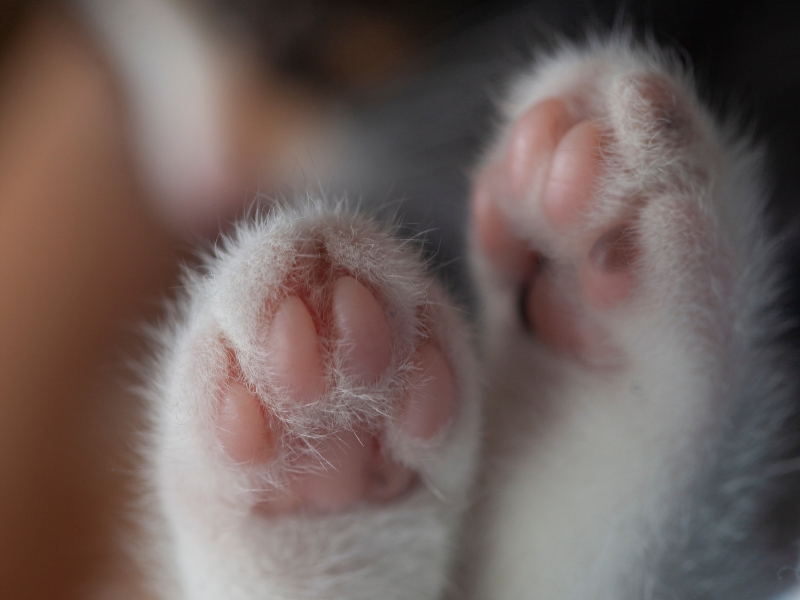
Paw Pads: The Tactile Communicators
Imagine your fingertips amplified in sensitivity, and you’ll have an idea of what a cat’s paw pads are like. These pads are equipped with an intricate network of nerves, allowing cats to gather an abundance of information about their environment through touch. Whether they’re testing the texture of a surface, gauging the temperature, or even feeling vibrations, paw pads are the sensory hubs of a cat’s communication system.
The Accidental Dirt Collectors
While cats are meticulous groomers, their paws inadvertently become collectors of the outside world. As they explore, jump, and play, their paws come into contact with a variety of surfaces – some clean and smooth, while others, not so much. This interaction with different terrains leads to the accumulation of dirt, dust, and tiny particles between their paw pads and toes.
Enter the Connection to Preventing Matting
Now, let’s connect the dots between these seemingly unrelated aspects. The dirt and debris that find their way onto your cat’s paws might seem harmless at first, but over time, they can lead to a host of issues, one of which is matting. Matting occurs when knots and tangles form in a cat’s fur, often close to the skin. This not only compromises their appearance but can also be uncomfortable and painful for your feline friend.
Role of Clean Paws in Matting Prevention
Here’s where the importance of clean paws comes into play. Remember the dirt and debris collected by those precious paw pads? During grooming sessions, cats use their tongues to clean themselves. This self-grooming process is efficient but can inadvertently transfer the collected dirt and debris onto their fur, especially around the legs and torso. Over time, this can contribute to the formation of mats, as the particles intertwine with the fur strands.
By maintaining clean paws, you’re taking a proactive step toward preventing matting issues. Clean paws mean cleaner grooming sessions, reducing the likelihood of transferring unwanted substances onto your cat’s fur. This not only keeps your cat looking sleek and elegant but also contributes to their comfort and overall well-being.
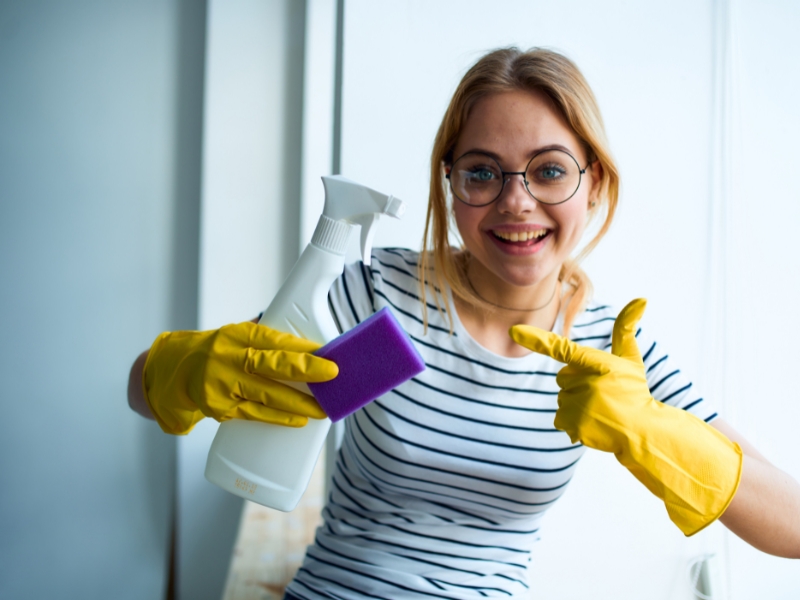
Gathering the Essentials
Before embarking on the journey to keep your cat’s paws clean and prevent matting, it’s essential to gather the right tools and products. Ensuring a stress-free and comfortable paw-cleaning experience for your feline friend starts with having the right essentials at your fingertips.
1. Pet-Safe Wipes or Lukewarm Water: Obtain pet-safe wipes specifically designed for cats or opt for lukewarm water. Both options are effective in removing dirt and debris from your cat’s paws without causing any harm. Make sure the wipes are free from harsh chemicals or fragrances that could potentially irritate your cat’s sensitive skin.
2. Mild Pet Shampoo: In cases where your cat’s paws are exceptionally dirty, a mild pet shampoo can come in handy. Choose a gentle, hypoallergenic shampoo formulated for cats. Remember, less is more – a tiny amount is sufficient to lather up those paws.
3. Towels or Soft Cloths: Having soft towels or cloths nearby is crucial for drying your cat’s paws after cleaning. Opt for materials that are gentle on their sensitive paw pads and won’t cause discomfort.
4. Treats and Positive Reinforcement: Don’t underestimate the power of positive reinforcement! Have some of your cat’s favorite treats on hand to reward them for their cooperation during the paw-cleaning process. This creates a positive association and can make future paw-cleaning sessions more pleasant.
5. Calming Environment: Create a calm and quiet environment where your cat feels relaxed. Choosing a familiar and comfortable space can help reduce any anxiety your cat may have about having their paws cleaned.
By having these essentials ready, you’re setting the stage for a successful paw-cleaning routine. Remember, the goal is to make this experience as comfortable and stress-free as possible for both you and your feline companion. In the next section, we’ll delve into the step-by-step process of cleaning your cat’s paws, ensuring that you’re well-prepared to carry out each stage with care and confidence.
Step-by-Step Guide to Cleaning Cat Paws
Now that you’re armed with the essentials and a commitment to your cat’s paw hygiene, let’s dive into the step-by-step process of cleaning your cat’s paws. Remember, patience and gentleness are key as you embark on this journey to maintain clean and healthy paw pads.
Step 1: Create a Calm Environment
- Choose a quiet, comfortable space where your cat feels at ease.
- Eliminate any distractions that could cause anxiety during the paw-cleaning process.
- Ensure your cat’s favorite blanket or bed is nearby to provide them with a sense of security.
Step 2: Gently Hold and Examine the Paw
- Approach your cat calmly and gently. Speak soothingly to reassure them.
- Gently hold your cat’s paw in your hand, allowing them to become accustomed to the touch.
- While holding the paw, examine the paw pads for any visible dirt, debris, or foreign objects.
Step 3: Use Pet-Safe Wipes or Lukewarm Water
- If your cat’s paws are relatively clean, you can use pet-safe wipes to gently wipe the paw pads and between the toes.
- For dirtier paws, dampen a soft cloth with lukewarm water and gently wipe the paw pads, taking care not to wet the entire paw.
Step 4: Drying the Paw Thoroughly
- After cleaning, use a clean, soft towel to pat the paw dry gently.
- Pay special attention to the areas between the toes and paw pads to ensure they’re completely dry.
Step 5: Offering Treats and Positive Reinforcement
- Reward your cat with a treat, praising them for their cooperation throughout the process.
- This positive reinforcement helps create a positive association with paw cleaning and makes future sessions smoother.
Remember, the goal of this process is to make your cat feel comfortable and cared for. If your cat shows signs of stress or discomfort, it’s okay to pause and try again later. Consistency and patience will help build trust over time.
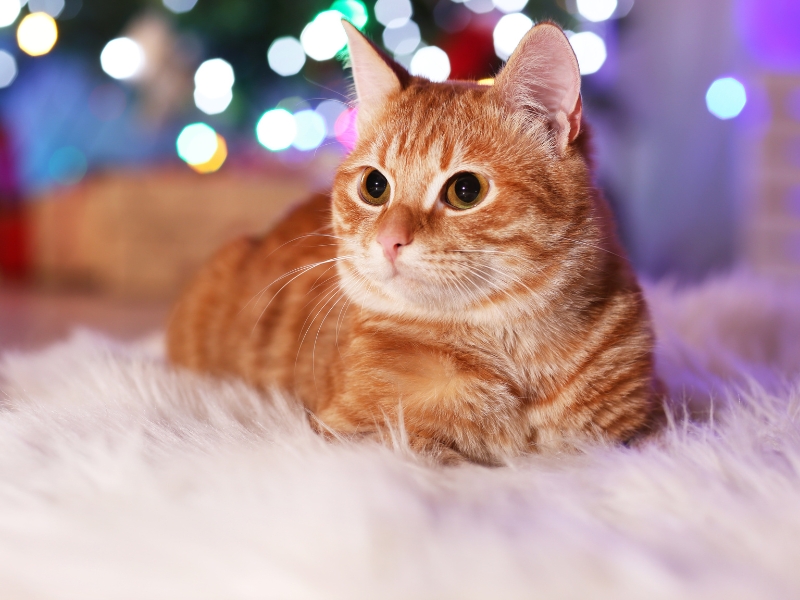
Addressing Matting Concerns
Matting is more than just a cosmetic concern for cats; it can impact their comfort, mobility, and overall health. In this section, we’ll delve into what matting is, why it occurs, and how the cleanliness of your cat’s paws plays a pivotal role in preventing this common issue.
Understanding Matting: What Is It and Why Does It Happen?
Matting refers to the tangling and clumping of a cat’s fur into knots or mats. These mats can range from minor tangles to more severe clumps that are tightly woven and close to the skin. Matting can occur on any part of a cat’s body, but it’s particularly common in areas with longer fur, such as the legs, belly, and tail.
Several factors contribute to matting, including shedding, fur length, and the presence of foreign substances like dirt and debris. When these elements combine, they create the perfect environment for mats to form. While grooming helps prevent matting, unclean paws can inadvertently introduce unwanted particles to the fur during grooming sessions.
The Role of Unclean Paws in Matting
Picture this: your cat walks on various surfaces, both indoors and outdoors, with their paws collecting tiny particles along the way. As they engage in their grooming ritual, the dirt and debris on their paws can transfer to their fur. This is especially true for the areas around the legs and torso.
When the transferred particles become entwined with the fur strands, mats start to form. Over time, these mats can become more complex and challenging to remove. They can also lead to discomfort for your cat, potentially causing skin irritation, pulling sensations, and even skin infections if left untreated.
The Prevention Solution: Clean Paws and Matting Avoidance
This is where the importance of clean paws comes to the forefront. By maintaining clean and well-groomed paws, you’re taking proactive measures to prevent the introduction of dirt and debris into your cat’s fur. When your cat grooms itself after clean-pawed adventures, they’re less likely to transfer unwanted substances to their fur, reducing the likelihood of mat formation.
As you diligently follow the steps outlined earlier to clean your cat’s paws, you’re directly addressing the root cause of matting. Clean paws create a foundation for overall coat health and contribute to your cat’s comfort and happiness. By incorporating this practice into your regular cat care routine, you’re not only ensuring a sleek and well-groomed appearance but also enhancing your cat’s quality of life.
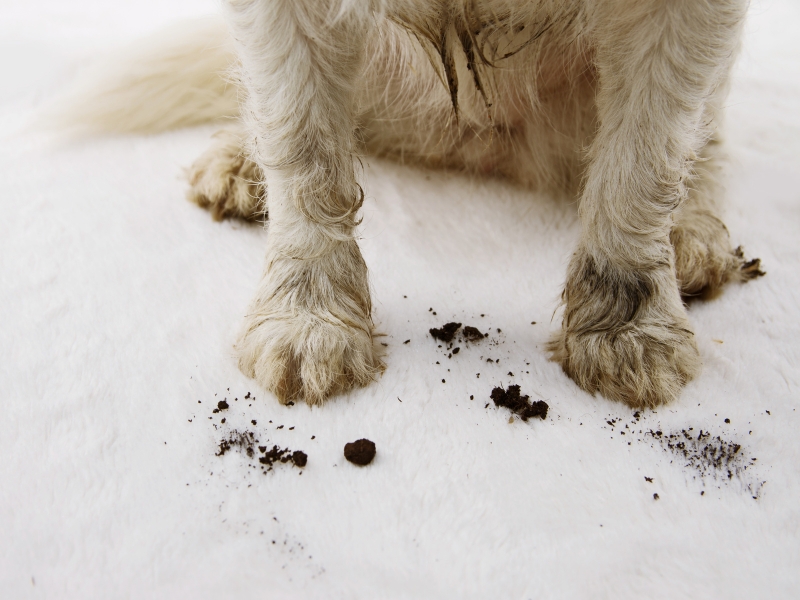
Preventive Measures for Maintaining Clean Paws
As a dedicated cat owner, you’re well aware of the benefits of clean paws and the role they play in preventing matting. In this section, we’ll delve into additional preventive measures that go hand in hand with regular paw cleaning. These practices will help you maintain your cat’s paw health and overall well-being.
Indoor Play Areas
Creating a clean and inviting indoor environment can significantly contribute to maintaining clean paws. Cats love to explore, play, and nap in various nooks and corners, so keeping these spaces tidy is key. Regularly vacuuming or sweeping up dust and debris minimizes the chance of dirt accumulating on your cat’s paws during their indoor adventures.
Clean Litter Box, Happy Paws
A clean litter box not only promotes good hygiene but also plays a role in paw cleanliness. Cats use their paws to bury waste in the litter box, and any residue left on their paws can transfer to their fur during grooming. By scooping the litter box daily and doing a complete litter change regularly, you’re reducing the chance of unwanted substances hitching a ride on your cat’s paws.
Relevant >> Best Cat Litter Box Options of 2023
Regular Grooming: A Holistic Approach
While paw cleaning is crucial, maintaining overall coat health is equally important. Regular grooming sessions, including brushing and combing, help prevent matting and distribute natural oils throughout your cat’s fur. These oils keep the fur soft and manageable, reducing the likelihood of knots and tangles.
Healthy Diet, Healthy Coat,
Believe it or not, your cat’s diet can also influence the health of their coat and paws. A balanced diet rich in essential nutrients contributes to a shiny, healthy coat. When your cat’s coat is in good condition, it’s less likely to trap dirt and debris, ultimately benefiting their paw hygiene.
Relevant >> Commercial vs Homemade Cat Diets
Keeping Paws Well-Trimmed
Paw hygiene also involves maintaining well-trimmed nails. Overgrown nails can trap dirt and debris, which can then transfer to the paw pads. Regular nail trimming not only enhances paw cleanliness but also promotes your cat’s overall comfort and mobility.
By combining these preventive measures with regular paw cleaning, you’re taking a holistic approach to your cat’s paw health and overall well-being. Each step you take contributes to creating a happy and comfortable environment for your feline friend. In the next section, we’ll dive into the delicate balance between trimmed nails and clean paws, shedding light on the symbiotic relationship between the two.
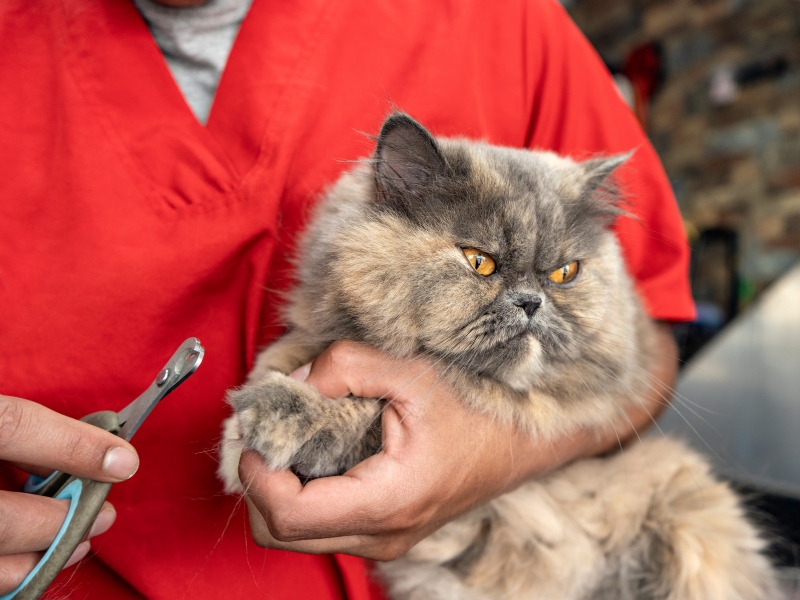
Trimmed Nails and Clean Paws
Cats are known for their graceful movements and impeccable grooming habits. But did you know that keeping your cat’s paws well-trimmed goes hand in hand with maintaining clean and healthy paw pads? In this section, we’ll explore the delicate balance between trimmed nails and clean paws, shedding light on the symbiotic relationship between the two.
The Connection Between Nail Length and Paw Cleanliness
A cat’s nails serve as more than just their built-in scratching tools – they’re also closely tied to paw hygiene. Nails that are too long can inadvertently collect dirt, debris, and even litter particles as your cat walks and scratches. These substances can then find their way to the paw pads and between the toes, affecting overall paw cleanliness.
Trimming Nails: The Benefits
Regular nail trimming offers a myriad of benefits beyond just clean paws. Here’s how well-trimmed nails contribute to your cat’s overall well-being:
- Enhanced Paw Comfort: Nails that are too long can curl and dig into the paw pads, causing discomfort and even pain. Trimming nails to an appropriate length ensures your cat’s paw pads remain free from unnecessary pressure.
- Preventing Injuries: Overgrown nails are more prone to snagging and breaking. By keeping nails trimmed, you reduce the risk of painful nail injuries.
- Maintaining Mobility: Cats rely on their nimble paws for balance and agility. Well-trimmed nails allow for better grip on various surfaces, enhancing their mobility and confidence.
- Reduced Matting Risk: As previously mentioned, clean paws play a pivotal role in preventing matting. Trimming nails reduces the chances of collecting dirt and debris, promoting paw cleanliness.
The Gentle Art of Nail Trimming
Nail trimming may sound like a daunting task, but with the right approach, it can be a stress-free experience for both you and your cat. Here’s a simple guide:
- Invest in Cat-Friendly Nail Clippers: Choose nail clippers designed specifically for cats. Scissor-type or guillotine-style clippers are commonly used and provide precise cuts.
- Familiarize Your Cat: Introduce the clippers to your cat gradually, allowing them to sniff and investigate. This familiarity reduces anxiety during the actual trimming.
- Choose the Right Moment: Opt for a time when your cat is calm and relaxed. Avoid attempting nail trimming during playtime or when they’re agitated.
- Gentle Handling: Gently hold your cat’s paw and press on the pad to extend the nail. Trim the tip of the nail, avoiding the quick – a sensitive area containing blood vessels.
- Positive Reinforcement: After each successful nail trimming session, reward your cat with treats and praise. This positive association makes future sessions more manageable.
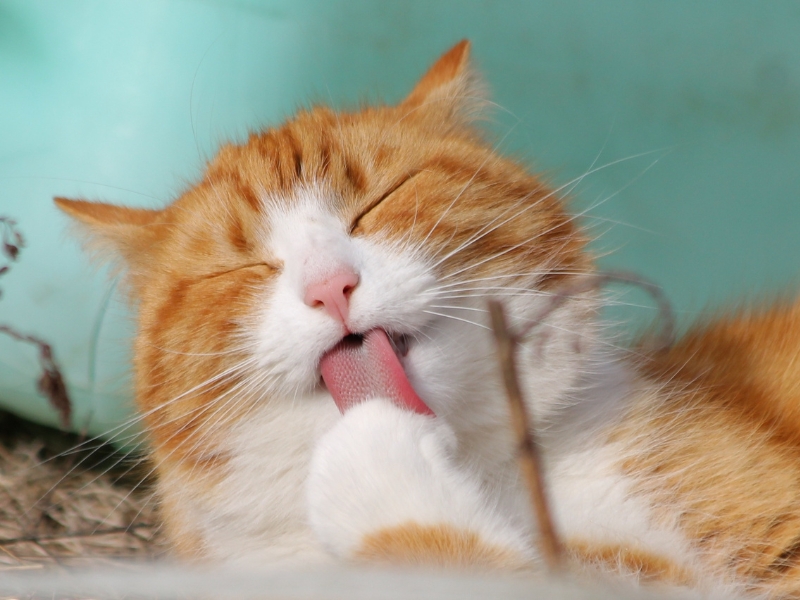
Final Words
In the enchanting world of feline companionship, every whisker twitch, every purr, and every playful swat hold moments of joy and connection. As a devoted cat owner, you understand the significance of providing your furry friend with the care they deserve. Throughout this journey to explore the intricacies of cleaning your cat’s paws and preventing matting, you’ve uncovered a wealth of insights that bridge the gap between grooming and well-being.
From the gentle touch of a clean paw to the careful snip of a nail, every action you take contributes to the harmony and happiness of your cat’s life. The importance of paw hygiene transcends aesthetics, touching upon their comfort, mobility, and overall health.
By embracing the art of maintaining clean paws, you’re not only preventing matting and discomfort but also deepening your bond with your feline companion. The soothing rhythm of paw cleaning transforms into a shared experience that fosters trust and love between you and your cat.
As you marvel at those intricate paw pads that have carried your cat through countless adventures, remember that each wipe, each trim, and each moment of care echoes your dedication. You’re not just a caregiver – you’re a cherished companion on this journey of mutual affection.
Let the insights gained from this article guide you as you continue to provide the best for your cat. As their paws remain clean, their fur sleek, and their spirit vibrant, you can relish in the knowledge that you’ve created an environment where your cat thrives, paws and all.



